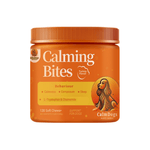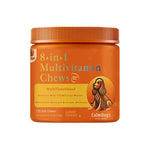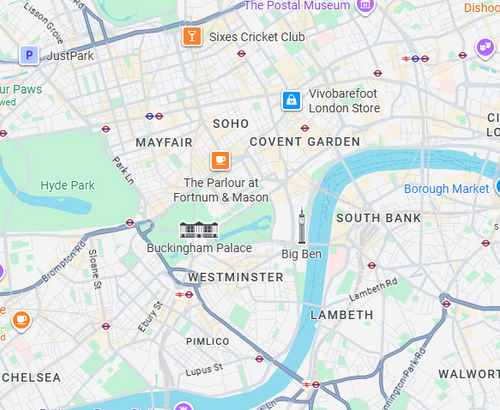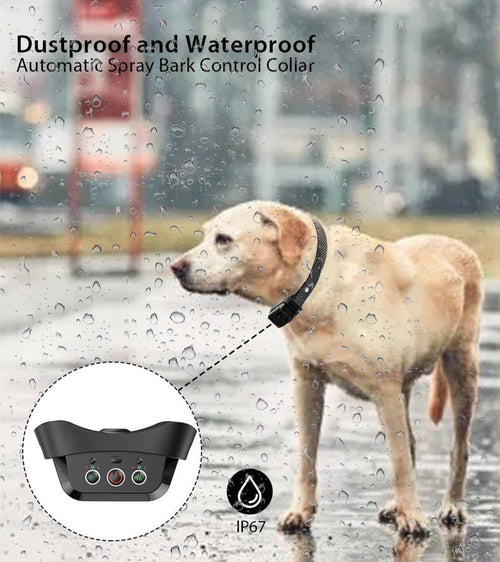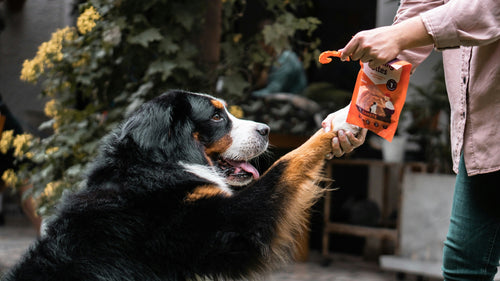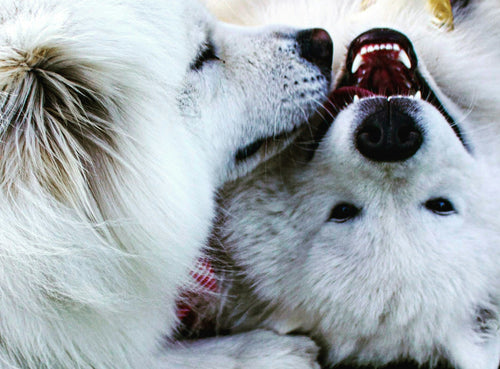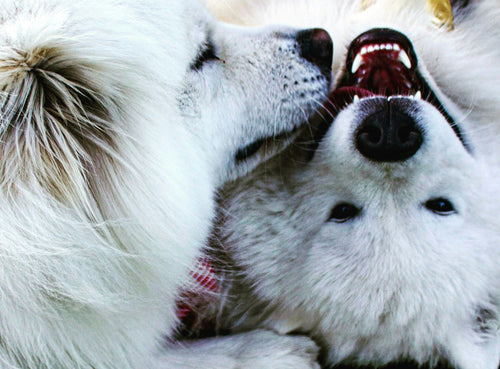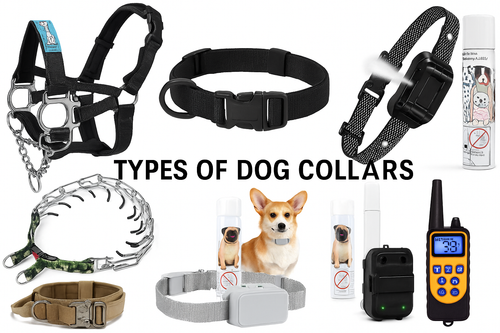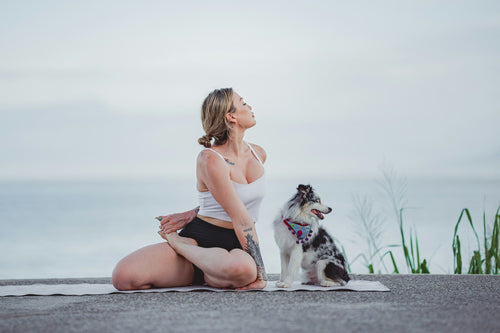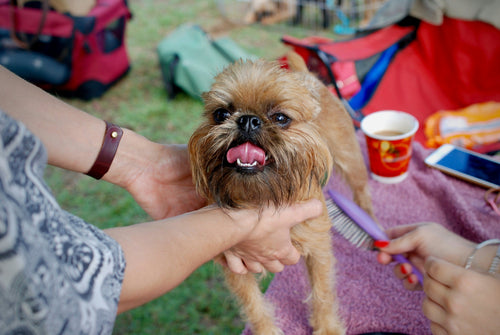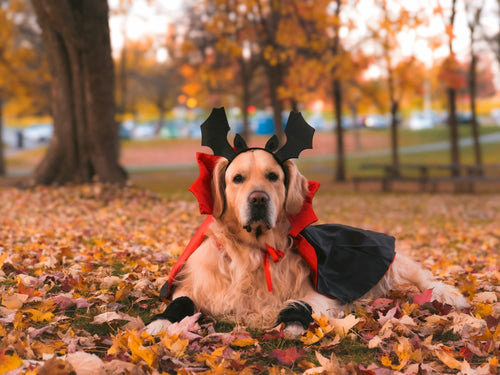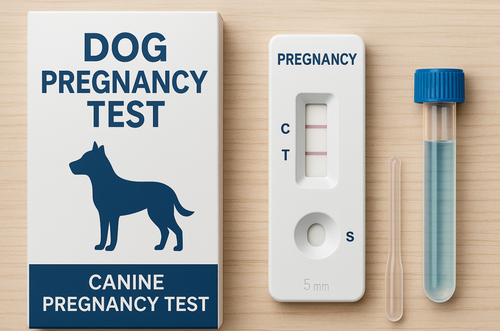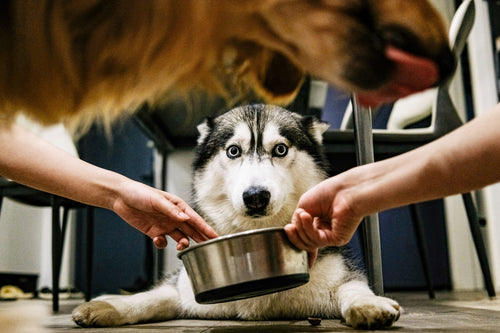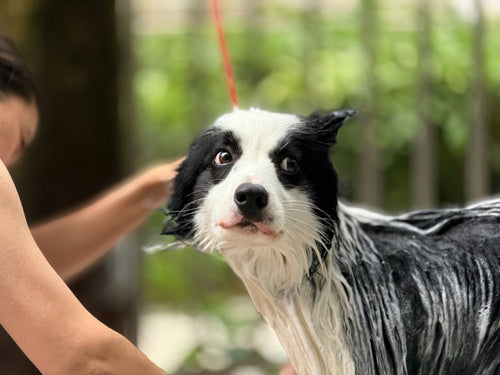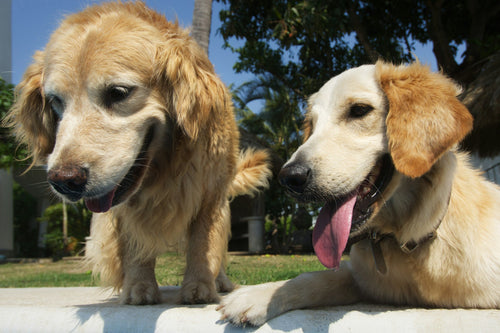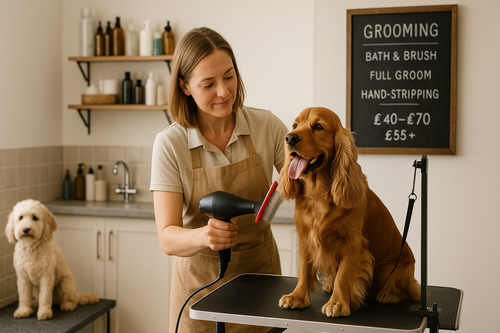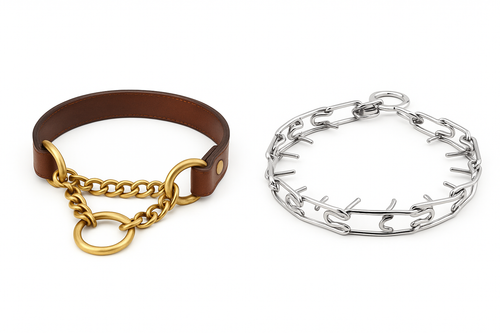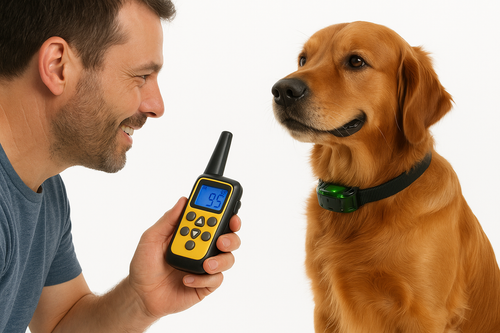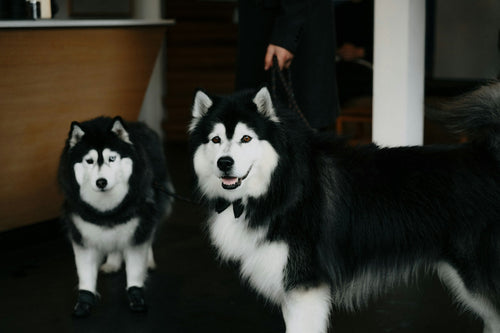Dogs communicate in many ways—through barking, body language, tail wagging, and sometimes even trembling. If you’ve ever asked yourself, “Why is my dog shaking?”, you’re not alone. Shaking in dogs can be caused by something as harmless as excitement or as serious as an underlying medical issue.
In this blog, we’ll explore the 10 most common reasons why your dog might be shaking, what you should look out for, and what steps to take. By the end, you’ll feel more confident about whether it’s just normal behaviour—or a sign to call the vet.
1. Excitement or Anticipation

One of the most common answers to “Why is my dog shaking?” is excitement. Many dogs tremble when they anticipate something fun, like going for a walk, seeing their favourite human, or waiting for dinner.
-
What to do: Excitement shakes are normal and nothing to worry about. If the excitement turns into over-arousal (jumping, barking excessively), try calming treats like Calmshops Calming Dog Treats to help them relax.
2. Cold Temperatures
Just like humans, dogs shiver when they’re cold. Short-haired, small, or senior dogs are especially prone to this.
-
What to do: Provide a warm blanket, sweater, or coat during colder months. Make sure your dog has a cozy space to retreat to indoors.
3. Fear, Stress, or Anxiety

Dogs often shake when they’re nervous or stressed. This might happen during thunderstorms, fireworks, vet visits, or when left alone (separation anxiety).
-
What to do: Identify the trigger and try to reduce exposure. Use calming aids, distraction toys, or training collars like Calmshops No Shock Vibrating Dog Collar for reassurance and better control. For long-term improvement, work with a behaviourist on desensitisation training.
4. Shaking While Cutting Their Nails

Many dogs absolutely dread nail trimming. If you’ve ever noticed your pup trembling during a grooming session, you’re not alone.
-
Why it happens: The sound of the clippers, the sensation, or past bad experiences can make nail trims stressful.
-
What to do: Go slow, reward with treats after each nail, and consider using a grinder instead of clippers. If your dog is still anxious, try pairing nail trims with clicker training (using a dog clicker from Calmshops) to build positive associations.
5. Muscle Weakness or Fatigue
Sometimes dogs shake simply because their muscles are tired. This can happen after a long run, an intense play session, or even standing for a long time on slippery floors.
-
What to do: Give your dog rest, hydration, and joint support if needed. Supplements such as advanced hip and joint chews can be beneficial for senior dogs or active breeds.
6. Pain or Injury

Pain is another possible answer to “Why is my dog shaking?”. Dogs don’t always yelp when something hurts—they may show it through trembling.
-
Possible causes: Sprains, arthritis, dental pain, or internal discomfort.
-
What to do: Look for other signs like limping, licking a specific area, or avoiding movement. If you suspect pain, consult your vet for a check-up.
7. Nausea or Upset Stomach
Just like humans get shaky when they feel sick, dogs may tremble when nauseous. Causes can include eating something they shouldn’t, motion sickness, or stomach bugs.
-
What to do: If your dog vomits once but seems fine, monitor closely. If nausea persists, especially with other symptoms like diarrhoea or lethargy, see a vet.
8. Low Blood Sugar (Hypoglycaemia)
Small breeds like Chihuahuas and puppies are especially prone to low blood sugar, which can cause trembling, weakness, and even fainting.
-
What to do: Feed small, frequent meals and keep a close eye on your pup. If fainting or collapse occurs, it’s an emergency—get veterinary help immediately.
9. Poisoning or Toxin Exposure
Some toxins can cause dogs to shake, drool, vomit, or even have seizures. Common culprits include chocolate, xylitol (found in sugar-free gum), grapes, certain medications, and household cleaners.
-
What to do: If you suspect your dog ingested something toxic, contact your vet or an emergency animal hospital immediately.
10. Neurological Issues
In rarer cases, shaking can be linked to neurological disorders such as seizures, tremor syndrome, or nerve damage.
-
What to do: If the shaking looks more like uncontrolled twitching, or if your dog faints, loses balance, or seems disoriented, seek veterinary advice right away.
When Should You Worry About Dog Shaking?
Sometimes, trembling is harmless (excitement, cold, nail trims). But in other cases, it can signal a serious problem. Contact your vet if:
-
Shaking is accompanied by vomiting, diarrhoea, or lethargy.
-
Your dog is shaking and struggling to walk.
-
Trembling is new and persistent without clear reason.
-
Your dog faints, collapses, or has seizure-like episodes.
How to Help Your Dog When They’re Shaking
If your dog’s shaking is situational (cold, fear, nail trims), here are a few tips:
-
Stay calm yourself – Dogs pick up on our emotions.
-
Provide comfort – Warm blankets, cuddles, or calming treats.
-
Distract with training – Use a clicker and treats to redirect their focus.
-
Create a safe space – A quiet room or crate where they feel secure.
-
Introduce training tools – Humane collars or toys from Calmshops can help reduce stress and unwanted behaviours.
Last Run: Why Is My Dog Shaking?
So, why is my dog shaking? The answer depends on the situation. Dogs may shake from excitement, cold, fear, or simple muscle fatigue. But trembling can also signal pain, nausea, poisoning, or more serious health problems.
The key is to look at the bigger picture: context, body language, and additional symptoms. While some shaking is harmless, persistent or unexplained trembling should always be checked by a vet.
By staying informed and proactive, you’ll not only understand your dog better but also give them the comfort and care they need. And remember, products like the Calmshops dog clicker, no-shock collars, and calming treats can make daily training and stress management easier for both you and your furry friend.



